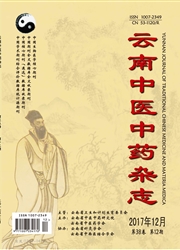

 中文摘要:
中文摘要:
[目的]以大脑中动脉阻塞(MCAO)大鼠为研究对象,通过观察血管内皮生长因子及其受体(VEGF/Flt-1)基因及其蛋白表达的变化以探讨电针对急性脑梗死大鼠血管新生的干预机制。[方法]将120只Wistar大鼠随机分为3组,即空白组、模型组、电针组,模型组和电针组按术后3 h、6 h、12 h、24 h、3 d、7 d、12 d各分为7个时相组,每时相各8只。各组造模后,电针组依时相进行电针人中穴的治疗。各组大鼠依时间段处死后,进行实时荧光定量聚合酶连反应(PCR)及免疫组化的检测。[结果]电针组VEGF/Flt-1的mRNA及蛋白表达均较模型组有显著上调。[结论]电针对急性脑缺血大鼠VEGF/Flt-1的表达有良性调整作用,可促进缺血半暗带的血管新生。
 英文摘要:
英文摘要:
[Objective] To identify the intervention mechanism of the acupuncture on cerebral angiogenesis by investigating the effects of electroacupuncture on VEGF/Flt-1 of rats with acute cerebral infarction. [Methods] The acute cerebral infarction in rat was reproduced by MCAO(Middle cerebral artery occlusion). The 120 Wister rats were divided into 3 groups: control group, model group and electroacupuncture group. Two groups were performed according to the continued time after the instant of MCAO and were divided into 3 h phase G, 6 h phase G, 12 h phase G, 24 h phase G, 3 d phase G, 7 d phase G, 12 d phase G,having 8 rats in each phase group. The electroacupuncture group was electroacupunctured in the Renzhong(DU26) point instantly after operation. The rats were killed at the time according to the phase, and detected the mRNA and protein expression of the VEGF/flt-1with the method of Real-Time PCR(Taqman) and immunohistochemestry. [Results] The expression of VEGF mRNA and protein in the electroacupuncture group was significant higher than that in the model group. The expression tendency of Flt-1mRNA in the electroacupuncture philtrum group was smooth compared with the model group. Only the expression of Flt-1 protein in the electroacupuncture group was positive. [Conclusion] The results suggest that the electroacupuncture can optimum regulate the expression of mRNA and protein of VEGF/flt-1 and improve the angiogenesis of ischemic penumbra.
 同期刊论文项目
同期刊论文项目
 同项目期刊论文
同项目期刊论文
 期刊信息
期刊信息
